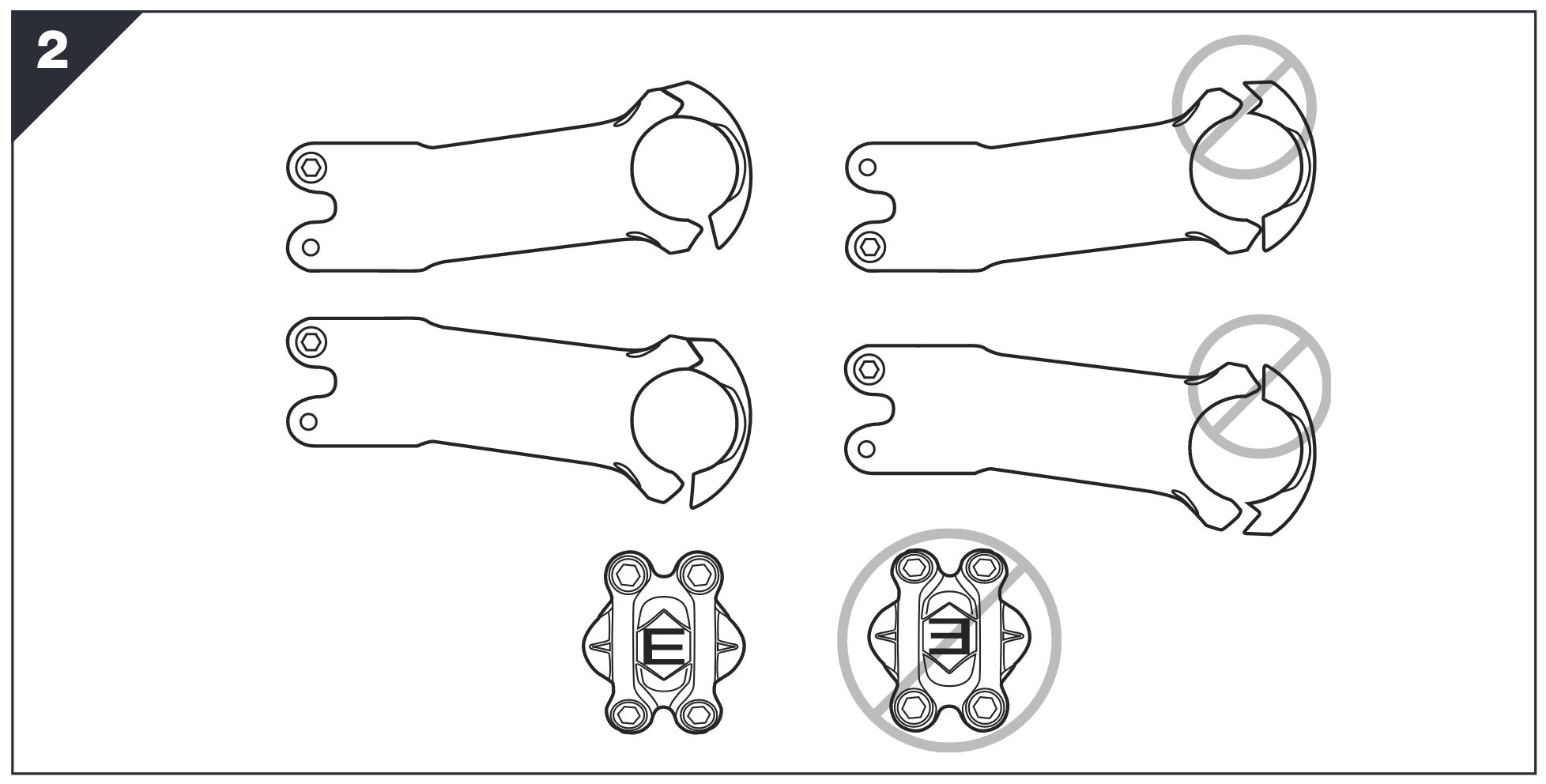My question is somewhat related to this one.
I apologize in advance for such a long question! And thanks to everyone who manages to get to the end.
I've bought an FSA Afterburner 12° stem. On the picture in the product description, and in their Stem Installation Instructions the stem is depicted with a negative rise (-12°).
The instructions for installing the faceplate are:
- Apply FSA Dynamic Installation Compound on handlebar clamp area. Insert handlebar between stem body ① and face plate ③.
- Apply grease to faceplate bolts. Alternately tighten TOP stem bolts until there is no gap between faceplate and stem body. Torque to 60 kgf.cm / 6 Nm / 53 in.lbs.
- Alternately tighten bottom stem bolts to 60 kgf.cm / 6 Nm / 53 in.lbs.
The product description mentions:
You have the option to run this stem at a + or – 12 degrees to suite your racing style.
I plan to install it with a positive rise (+12°). If I just flip the stem over and follow the instructions to the letter, tightening the TOP bolts first, I will have no gap on top, and a gap on the bottom (where it says "No Gap" on the stem body). This seems like a wrong thing to do.
Inspecting the stem body and the faceplate, I see that the stem's front part is symmetrical, it's only the faceplate that determines where the "No Gap" side will be (the side that has the "crossbar", top on this photo).
I see these solutions:
Flip the faceplate upside down, follow the instructions: TOP bolts first. The "No Gap" area on the stem will be the side that actually has the gap. Note: Somehow this "feels" to me like the right answer, however see note for option #2.
Follow the instructions "upside down": BOTTOM bolts first. Seems like violating the instructions, unless we assume that the instructions only refer to negative rise installation. Note: There are two FSA logos on the faceplate - one normal and one upside down. FSA doing this makes sense if the stem was designed to be flipped together with the faceplate, however it is unnecessary if the stem is flipped and then the faceplate is flipped back. This makes me think option #2 is what the manufacturer intended, however this could also be just a design feature.
Follow the advice of the online bike shop that sold me the stem:
I like that you check the instructions very well, don't take them too seriously. Just install the faceplate, that the gap is almost the same at the top and bottom.
Personally, I'm guessing that options #1 and #2 are both acceptable, with #1 being possibly mechanically better, and option #3 is wrong due to reasons presented here.
P.S. I know it's a different product, but Easton Top Lock instructions contain this:
For positive and negative rise setup, top of faceplate should always be touching, bottom of faceplate should always have gap (Fig. 2).
Note how they point out the E logo being always in the right orientation, unlike FSA, which has one out of two logos always right side up. I just wish FSA would be as careful as Easton when creating instructions.
Bonus question: The instructions say to use grease on the faceplate bolts (no mention of grease for the steerer fixing bolts). All the bolts have a white coating which I guess is a pre-applied thread locking compound. In my experience, when using liquid thread lockers (e.g. LocTite 243), we should avoid oil or grease. Is pre-applied thread locker different from liquid one, making it reasonable to grease such bolts? The bike shop told me "Don't use grease for the bolts". What are your opinions?




